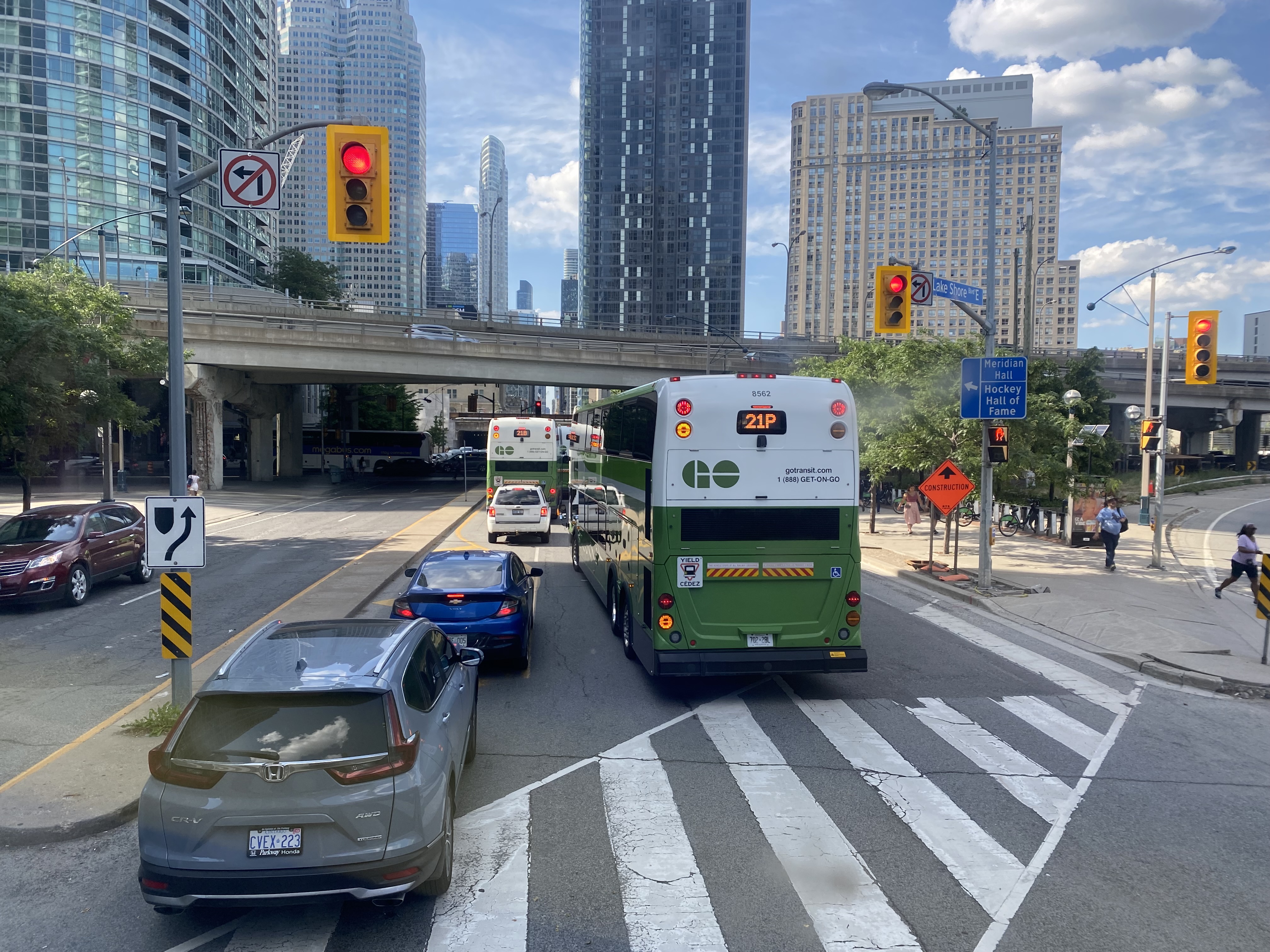Interesting that the Port Credit diversion should come up, because the signage and communication around it is atrocious, too. The less charitable of you reading this story could say I did this to myself by not checking the service advisories before I went out, which is fair, but on the other hand, I shouldn't need to check a website to know about what diversion my bus is taking.
I took the 21B into Toronto and everything was going routine until the bus turned from the 401 onto the 403. I had no idea something was off; TransSee was showing all the buses were bound for Union, the sign said the bus was bound for Union, everything seemed a-ok. I've just come back from a 3 week holiday in Europe and I wondered if maybe in my absence Metrolinx had rerouted the 21B to Square One to provide a connection between there and Milton; while such a connection should of course exist, dragging the 21B off course for it would be a terrible idea and so on brand for Metrolinx. The bus doesn't turn into Square One and keeps going south. Getting up to ask the driver where tf we're actually going wasn't on the table as I was sat next to a sleeping passenger, but the closer we got to the lake the more baffled I became. Finally, the bus turned into Port Credit and the driver says we can catch the train into the city from there.
The fact that there was zero indication on the sign, no announcements from the driver or the robot lady living in the bus' attic is genuinely ludicrous. Apparently, the TTC doesn't show rerouted routes on their destination signs because they're afraid passengers will think it's a short turn and wait for the next bus to the correct destination which will never come. I assume GO has the same, or a similar, reason for doing this, but in all circumstances the fact that they can get away with this lack of information is absolutely astounding to me. The gold standard for diversion signage is in Brno, Czechia; I mocked up this display in their style back in 2016 when I was criticizing the TTC for doing just this very thing when Exhibition Loop was closed to streetcars, and they were short turning at Fleet (Lighthouse) Loop. The sign indicates where the vehicle is going, as well as quickly showing that the intended destination of the service can be accessed via a bus connection. Internal announcements could be used to explain just why exactly this is happening. Every major city of the world I've travelled to uses the destination signs to indicate in some way that the vehicle is going somewhere else or doing something differently; why, oh, why does Toronto always have to deviate from the norm?
View attachment 425017
On the way back the bus used the QEW and Erin Mills Parkway, leaving out the stops north of Millcreek Drive. I have no idea what the plan is for anyone who needed to get there. All in all a complete shambles. And never mind me, what if it's an old person with issues using the internet that got caught up in all this confusion? If the TTC and Metrolinx devoted a fraction of the time to wayfinding and communication that they devote to branding and other pointless wastes of time, we'd be a lot better off than we are currently.
As an aside, the SuperLo double deckers are probably the worst transit vehicle I have ever ridden. The soundproofing in the interior is virtually non existent (a plane is quieter), there is zero padding in the flip up seats for wheelchairs, and every bump is absolutely BONE SHATTERING. I'm old enough to remember the old GM New looks that ran in Toronto, and they were never as bad as the double deckers. And those were 30 year old buses; what excuse do these much newer things have?








